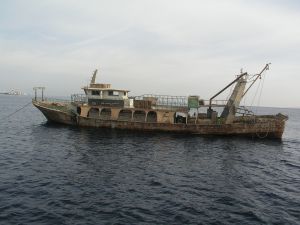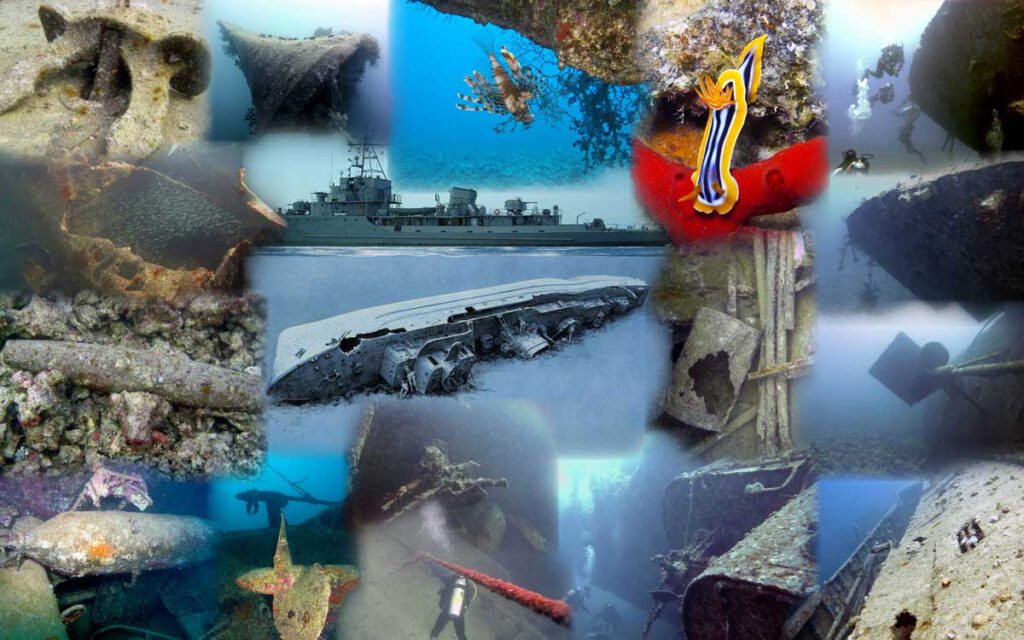El Mina (Hurghada - Egypt)
On our ‘micro BrotherDive’ to Hurghada in 2024 we also dived the wreck together.
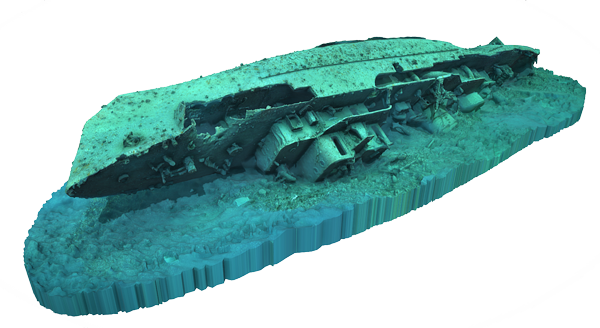
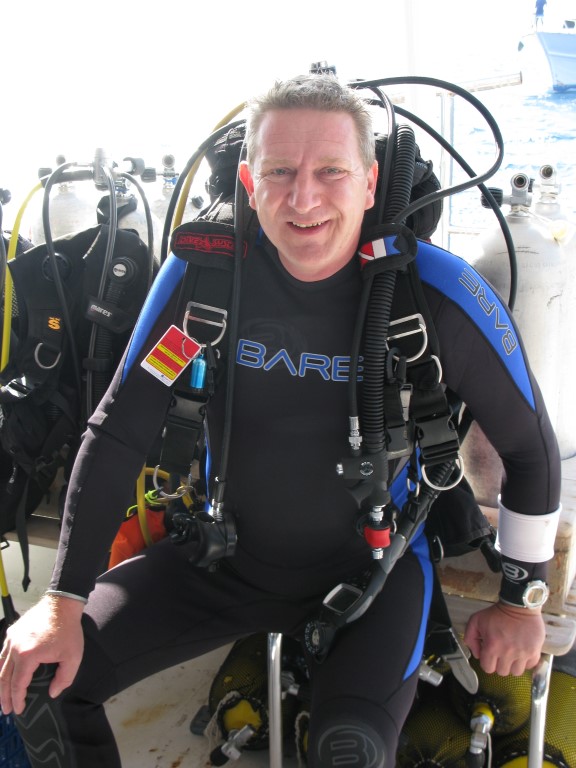
This article is part of the “Get wrecked” series written by Edwin and originally published in the diving magazine of Lucky Divers Rotterdan (The Netherlands)
You can view the article by clicking on the image
NOTE: At this time the PDF of the published article is only available in Dutch.
Sorry for the inconvenience.
Click to view the original article as PDF (Dutch)
El Mina / El Miniya (Hurghada - Egypt)
This time we will discuss the wreck of the “El Mina”. The El Mina (which is Arabic for harbour) owes its name to the fact that it sank near the harbour of Hurghada. Her real name is “El Miniya” and is also known as “The Harbour Wreck”
The ‘harbour wreck’ is a Russian minesweeper. It is located just outside the harbour of Hurghada at a maximum depth of 32 metres. The ship was sunk by bombers in 1970, while at anchor, during a conflict with Israel.
NOTE: We make use of “Sketchfab” click HERE to view the navigation controls
Click on the 3D model below to move it around
All credits to the above Photogrammetry model goes out to Holger Buss
The story & the dive
The data
• Type: Minesweeper (NATO class T-43)
• Construction no. 254
• Tonnage: 569 tons
• Year of construction: 1956
• Length: 70 meters – Width: 9.5 meters
• Propulsion: 2 diesel engines 2200 HP / 2 propellers
• Speed: 14 knots (26 km/h)
• Crew: 65 to 77 persons
• Date of sinking: February 6, 1970
• Minimum depth of wreck: approx. 18 meters
• Maximum depth to seabed: approx. 34 meters
• Current location: (East of military base in Hurghada, Egypt)
Arms / extras:
• Sonar mounted in the hull; Tamir-II HF
• 2x twin 37mm anti-aircraft guns,
• 2x twin 25mm anti-aircraft guns
• 2x twin 12.7mm anti-aircraft machine guns
• Depth bombs: 2x DC Mortars
• Mines: 2 mine rails of 12 to 16 mines.
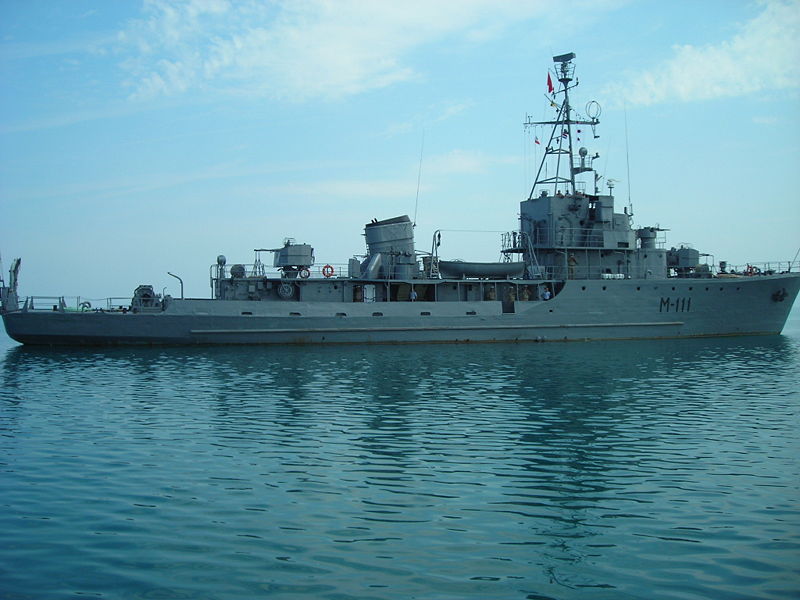
The El Mina in better days
The history
The El Mina (also called El Minia or El Miniaya) was one of four ERA – T43 minesweepers built in the former USSR. They were delivered to Egypt in the spring of 1956 as part of a $120 million deal concluded by President Nasser at a meeting in Moscow on September 24, 1955. The T43 class minesweepers were built in Russia between the late 1940s and the late 1950s.
A total of 178 of this type of minesweepers were built at shipyards in Leningrad and Kerch in Poland and modified under license from China. 44 of these ships were exported to various countries over the years, Egypt received 7. It is interesting to know that the T43 design was officially an English design, but apparently the blueprints somehow ended up in Russian hands…..
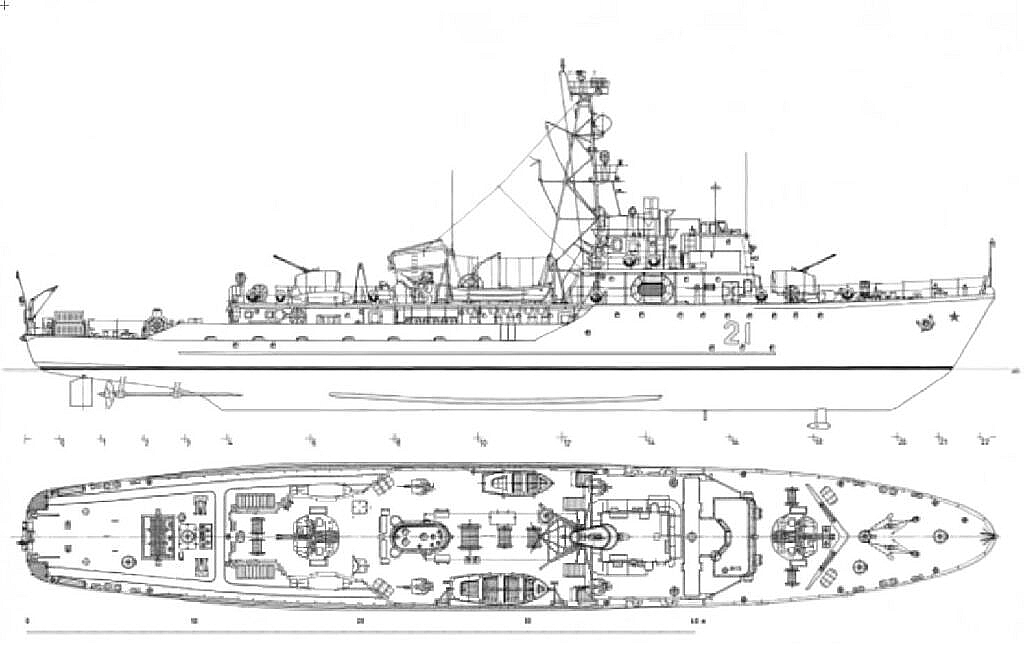
T-43 class minesweeper
The four minesweepers are named after four different Egyptian cities; Bahaira (Ex-301), Charkieh (Ex-304), Dakhla (Ex-305), Gharbia (Ex-306) and the hometown of President Nasser himself, Miniya (Ex-302).
After the sinking of the El Mina, the ship was replaced by another T-43 minesweeper named Sinai, which was delivered with two more T-43s in the autumn of 1970. Five of the T-43s are still in use today, and can be seen regularly in the port of Hurghada.
In 1995, an Egyptian captain, and former Egyptian soldier, stated that he had witnessed the sinking of the ship on June 6, 1967. This was the day after the Israeli air force attacked airfields in Egypt, Jordan, Iraq, Saudi Arabia and Syria and started the “six-day war”, also known as the “June War”. This war lasted from June 5, 1967 to June 10, 1967, but the disagreement between the countries had been going on for much longer. On June 10, the ceasefire proposed by the United Nations was accepted and this war ended.
However, the story turned out to be untrue, as the ship sank much later, but it is still frequently (incorrectly) stated that the ship sank during this 6-day war.
The sinking
In the early 1970s, tensions between Egypt and Israel rose again. In 1969, Egypt launched an “unofficial” war to recapture the Sinai Peninsula from Israel, which they had lost during the 6-day war. In response, the Israeli air force attacked targets that were far inside Egyptian territory.
These targets were mainly industrial and military installations.
This conflict eventually ended in the Yom Kippur War which started on October 6, 1973 when Egypt and Syria unexpectedly attacked Israel.) On February 6, 1970, 4 to 6 Israeli fighter planes (probably Phantom F-4A, or Mirage III) flew low over the Red Sea from the east to avoid the radar in the direction of Hurghada. Their mission; destroying the radar installation near the airport. At that moment, the El Mina was anchored in front of the port of Hurghada, directly in the path of the attacking planes.
One or two of the planes received the order to clear the way for the attack on the radar station and opened fire on the El Mina. The El Mina was able to repel the attack for some time and in turn opened fire on the fighter planes.
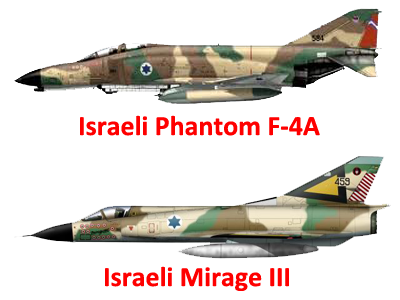
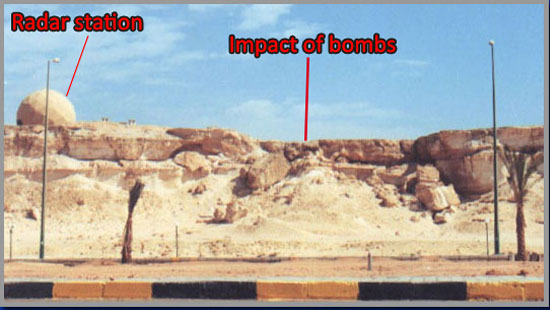
Because the ship was still at anchor, it could not escape the attack of the Israelis. The anchor was weighed to escape the attack, but it was already too late. After a short game of cat and mouse, the El Mina was finally hit on the starboard side by a small bomb, after which the ship immediately capsized.
The ship, still afloat, was then fired upon by heavy machine guns from the fighter planes. These hit the bottom of the ship, causing it to sink. As far as is known, there were no casualties during this attack.
The fighter planes subsequently failed to bomb the radar station.
The radar station is still in use, and right next to the station you can still see the impacts of the bombing. In 2005 apartments were built in front of it, so it is currently no longer directly visible from the road.
The dive
A permanent mooring rope is attached near the 2 propellers, due to the popularity of this wreck there is often a constant stream of divers descending and coming up again.
The ship lies on its left side (port side) and so you can only admire the deck and the keel on its right side.
Since the wreck lies in the middle of a shipping channel, visibility can sometimes be poor here due to the almost always present current.
It is best to start the dive at the back of the ship, here you can immediately see the 2 propellers and rudders.

Propellers & rudders
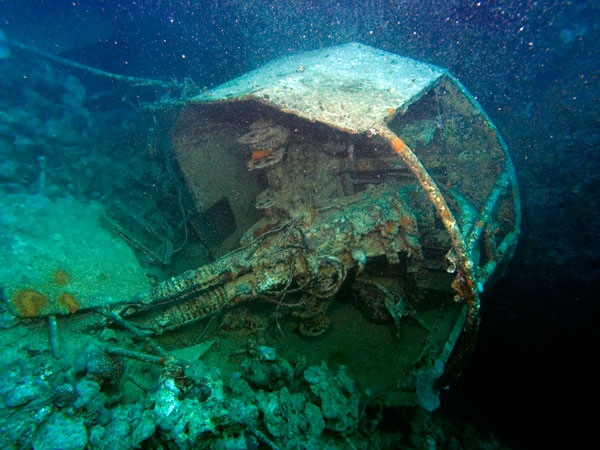
37 mm anti-aircraft gun
Here you will also find the large cable reel that was used to tow the torpedo-like minesweeper device.
Continue your dive towards the bow, here you will first come across a 37mm anti-aircraft gun, next to the funnel.
Just behind the bridge, close to the bottom, you can take a look in the radio room. When you have swum past the bridge there are two more 25mm anti-aircraft guns on the deck.
The mast was torn off during the sinking of the ship and lies slightly away from the wreck on the bottom.
When you come to the bow of the wreck you will see that this part has a lot to offer. First of all you see the mounting location of the second 37mm anti-aircraft gun, when the El Mina listed it fell off and now lies slightly south of the bow on the seabed. About 10 meters from the wreck there is also a torpedo on the seabed.
On the starboard side the anchor lies on the bottom with the chain still attached, this is beautifully overgrown with soft corals. With a bit of luck you will also find beautiful nudibranchs under the bow!
You will undoubtedly also encounter some lionfish here. Now ascend a little to the bow, here you will find the other anchor on the starboard side that is still in place. You will also find the sonar built into the hull here (a Tamir-II HF).
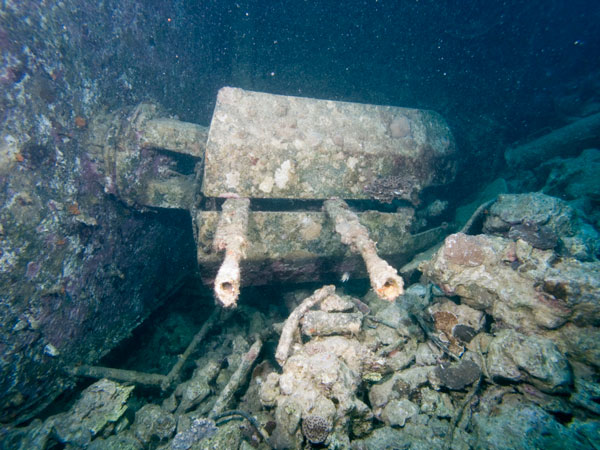
25 mm gun
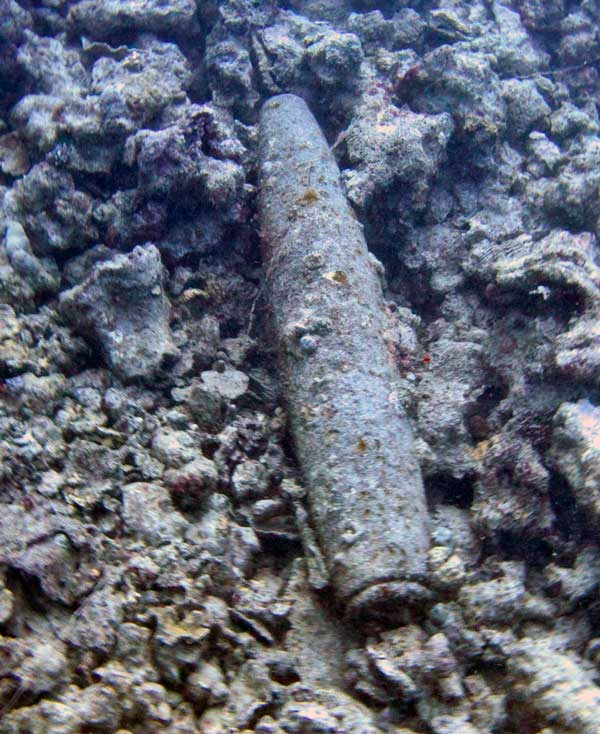
Torpedo next to the wreck
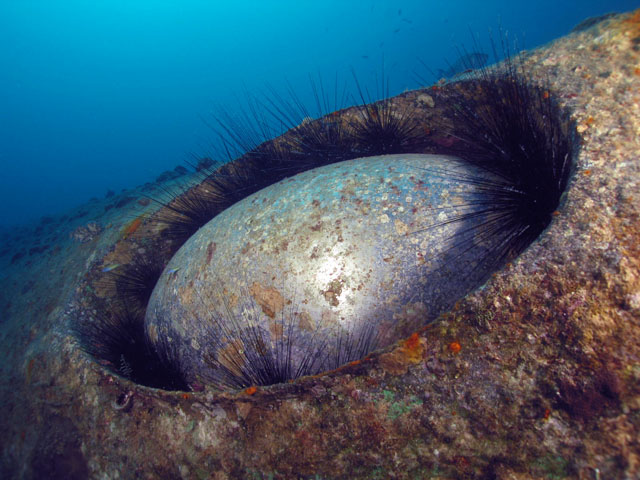
The Tamir-II HF sonar
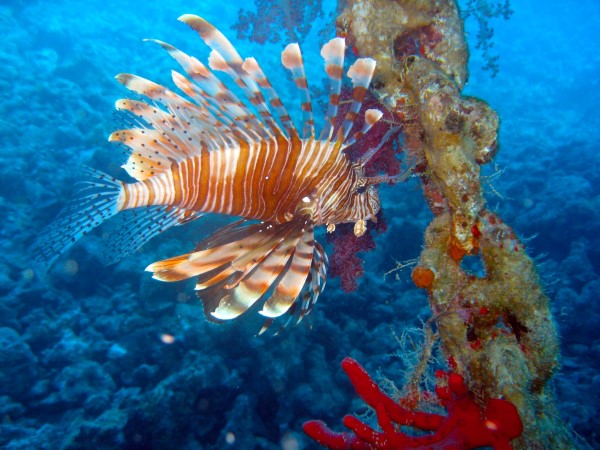
The anker chain
Then swim back along the bow towards the stern, now you will come across the large hole where the bomb hit at the time. You can enter the ship a little through this hole, but watch out for sharp protruding pieces of metal. The hole where the bomb hit is teeming with glass fish and lionfish. Puffer fish and small grey moray eels are also often seen here.
The wreck is almost inaccessible for penetration, but for advanced divers who really can’t resist, this is also the entrance to the inside of the ship. Once you have descended into the hole that the bomb caused, you can swim into the ship via a kind of gangway towards the stern, you can then exit after about 15 metres via a door above your head.
However, if you swim a little further down the gangway you will come to the next room, but the space here is very limited. There are still some doors and windows here through which you can see the inside of the ship, it is possible to go a little further into the ship, but it remains very difficult to manoeuvre due to the very narrow openings.
If you leave the ship via the top door (or swim over the ship from the bomb impact) continue your way towards the back of the ship. In the aisles you pass there is a lot of ammunition, you will also find the torpedo-like devices that were pulled during minesweeping.
End your dive by swimming over the starboard side (side) of the ship back towards the mooring rope. On the side of the ship you will find many species of fish such as parrot fish and emperor fish, there are also many pipefish here.
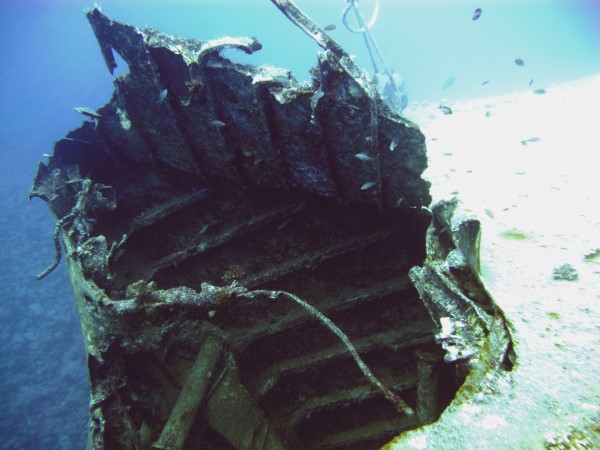
The impact hole
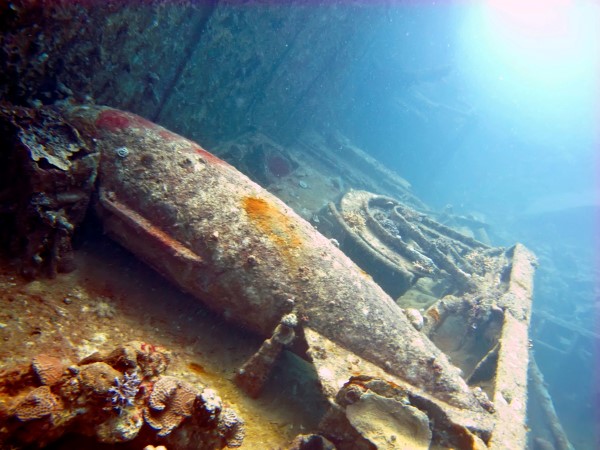
The tow torpedo
Flora and fauna
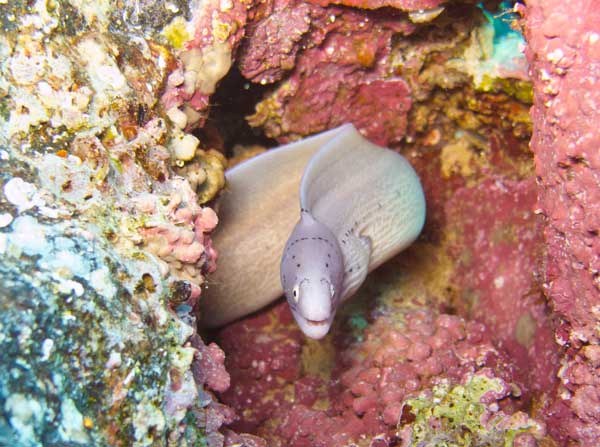
There is no reef here, so don’t expect sparkling coral life but there is plenty to see around and on this wreck. As mentioned, the part where the bomb hit is a paradise for glassfish, lionfish make life very difficult for these fish here… There are many bass and tuna around the wreck.
You will find various types of sponges on the wreck that vary in all sizes. Furthermore, there are relatively many soft corals to be found on this wreck, mainly around the bow of the ship near the anchor chain.
Also look out for a school of small barracudas that are located around the ship. Look carefully in all the holes and caves, you will be amazed at what you can find on this wreck.
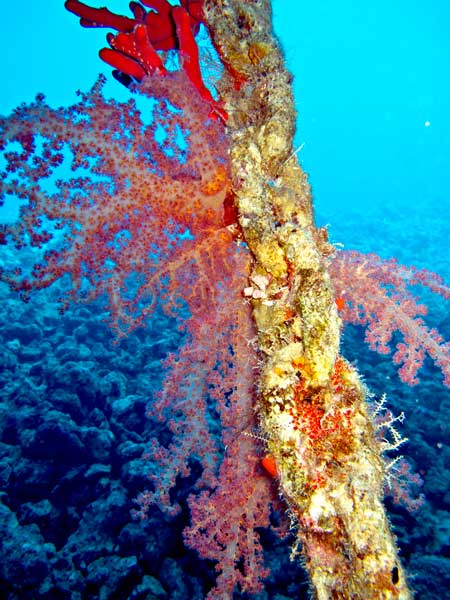
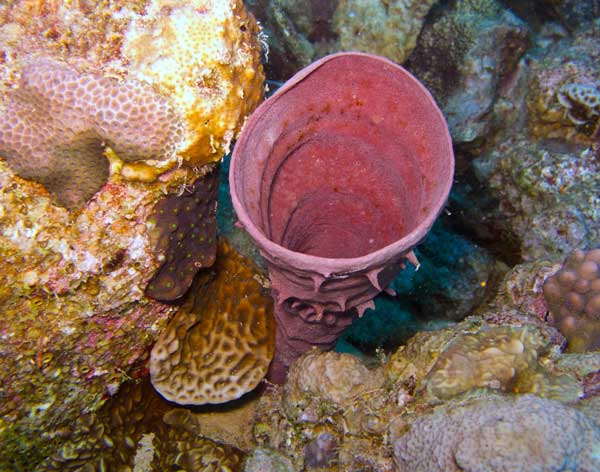
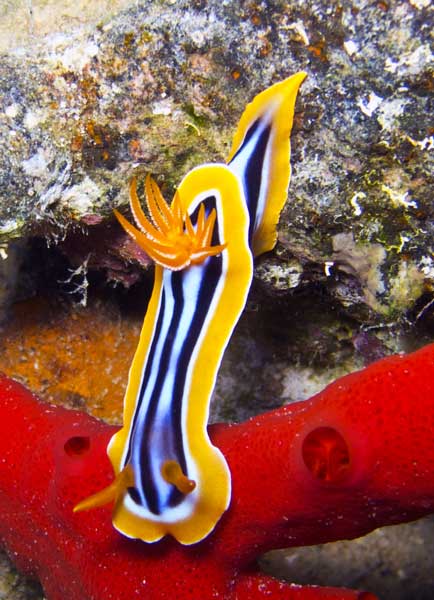
Two for the price of one…..?
What a deal, because as if 1 wreck is not enough, there is a second one to visit at this location!
For those who still have enough air left, there is indeed a second wreck 1 to 2 minutes away by swimming, since the autumn of 2006. Namely that of a wooden fishing vessel of approximately 35 meters called “Mohamed Hasabella”.
But we will discus this wreck in a seperate item.
